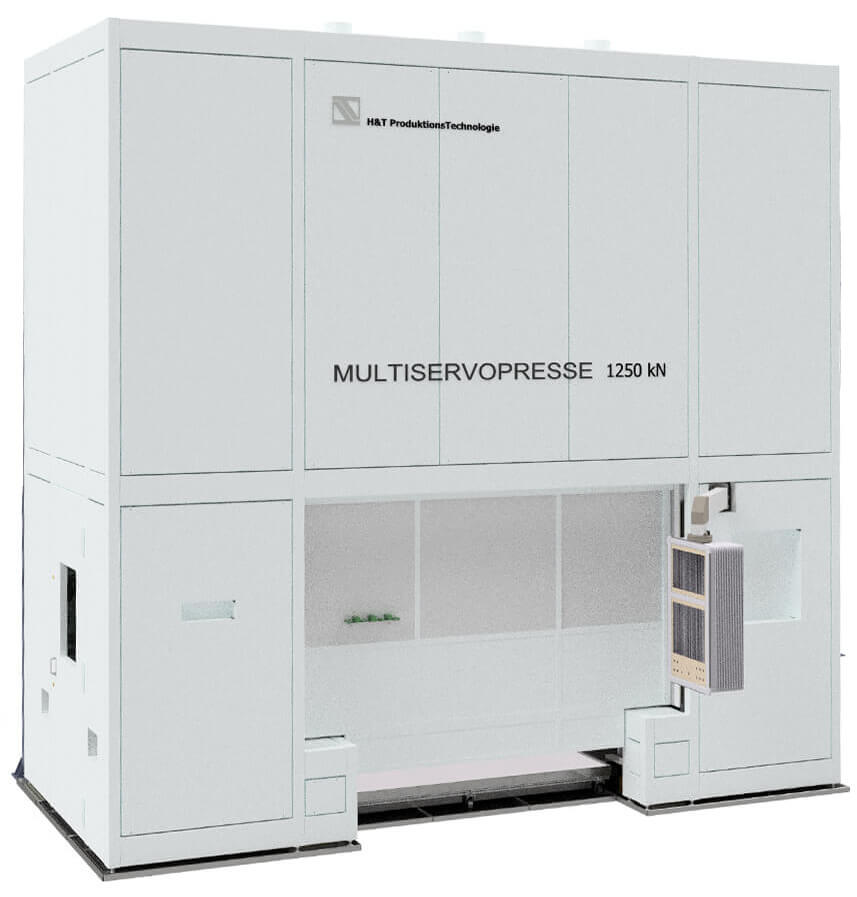MultiServoPresses are equipped with all of the technical advantages of the ServoSpindlePresses, but are particularly suitable for complex techniques. Thus, for instance, when they are used as transfer or multiple-die presses, the supplementary axes are moved independently by means of servo drives. This way, their flexibility can be made use of for future applications. In combination with the automated quick-change system, product changes can be executed quickly, and idle times can be reduced as well.
Advantage in technology:
- Maximal tonnage available along the entire stroke range
- Press forces can be distributed within the die
- Arbitrary stroke locations and stroke heights, large variety of dies
- Increased number of strokes through individual motion segments
- More efficient product development
- A wider range of parts can be produced
- Top cut quality by high-precision ram parallelism control
- Highly complex parts can be produced with supplementary operations

-
Force transmission centers — number and position
For optimal adjustment to the tool working range.
Close -
Tonnage distribution along the stroke
Maximal tonnage along the entire stroke, better distribution of individual press force components within the die. Less tonnage required than for conventional presses..
Close -
Drive dynamics
Individual motion functions are parameterizable to achieve maximal press efficiency.
Close -
Smallest die clearances through high-precision rams
Machine precision and active ram position control guarantee minimal die clearance and top quality cutting with low die wear.
Close -
Quick tool change
Minimal die changing times, no losses of setup parameters, fewer personnel needed for die change.
Close -
Ram position control
Compensation of frame elastic deformation and torsion in real-time mode, at different load, velocity and temperature.
Close